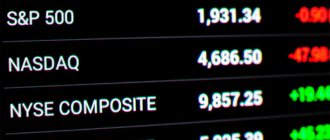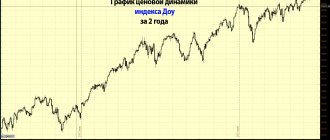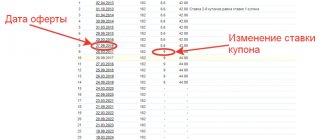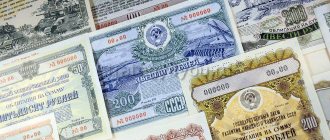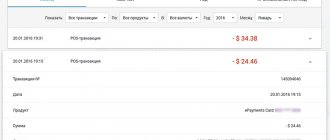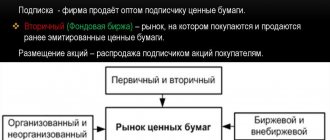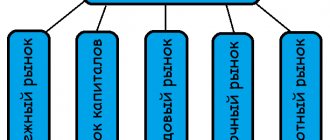Why do people choose not to lend money? Because at first you give, then you are nervous about getting it back on time, then when they don’t pay it back, it’s somehow awkward to hint, and the borrower is already freezing with all his might. What if you lend to the state, a large bank, your favorite IT company or your city? A reliable borrower, guaranteed interest, exact terms - this will make even the person furthest from investing think. If I were to rank stock market instruments and other investments according to the degree of their conservatism, then bonds would occupy a confident second place after bank deposits. This is a popular conservative instrument that is aimed at preserving funds and obtaining a small return (+ inflation value, if there is no crisis). However, if everything were so simple, then there would be no need to devote a whole large article to bonds, everything would be limited to instructions: Russian Railways and OFZ bonds are good, but bonds of microloan companies are bad, choose good ones, expect income. I suggest taking a break from everything else for 20-30 minutes and immersing yourself in the topic of bonds, especially since the issue of saving money is faced by many of our readers.
Previous articles in the series:
1. For stock market newcomers: honest conversations about trading 2. For stock market beginners: honest conversations about stocks
Important Disclaimer
After the first article in the series, we received extensive feedback and even a response article, where we were accused of stupidly popularizing working on the stock exchange as an easy way to make money. Therefore, let's dot all the i's.
- Our series of articles is for beginners of all specialties, not just programmers, analysts and mathematicians. That is why we do not immerse readers in the development of our algorithms and complex analytics.
- We know ourselves and we convince you that working on the stock exchange is not a quick or easy way to make money. Making money from your main job and freelancing is easier and more effective. But since interest in stock instruments is constantly growing, we want to cover this topic in an accessible way for everyone. In many ways, we try to warn readers against losing large sums.
- We do not sell any financial products or strategies; the only thing that RUVDS has for those who want to try themselves in the stock market are servers with pre-installed METATRADER 5 software (such a cool platform with its own programming language and huge capabilities). We have the same ones for any other purposes.
- If you have questions and suggestions, write in the comments. Perhaps at the end of the series we will release a publication with answers to the most important questions.
Types of Bond Strategies
The methodology used in the debt securities market allows for returns that are higher than the standard coupon (interest) rate or risk-free rate. This rate is determined by the level of interest rates on bank deposits and/or the coupon yield of government bonds. For example, OFZ in Russia, Treasuries in the USA.
Such bond investment strategies involve taking advantage of the properties of financial instruments.
Advice.
To work in the bond market, long-tested strategies for working with bonds are best suited, the list of which is as follows:
- Using interest rate movements;
- Barbell;
- Wheel;
- Bond harvester;
- Ladder.
Bond investment strategy “Bond Harvester”
In addition, bond investment methods used by professional or institutional investors are used. These are, for example, strategies associated with short-term speculative trading, so-called high-yield bonds - “junk bonds” or “junk bonds”.
Bond Strategies
What you need to know about bonds before buying
In investment practice of working with securities, one methodology in its pure form is rarely used. Typically, a strategy for working with bonds is a combination of several methods, when an investor chooses the most optimal option for investing his money in relation to his goals and market conditions.
Below we will consider the characteristics of the main bond strategies.
Principles for choosing bonds for IIS
Advantages and disadvantages
So, let's summarize the main pros and cons of bond trading.
Pros:
- Low level of risk: with bonds it is almost impossible to go into the red.
- Accessibility even for beginners, since the denomination is almost always 1000 rubles.
- Convenience of passive use: bonds generate regular coupon income during their validity period.
Minuses:
- Low profitability.
- Limitation of active trading: these securities are characterized by low liquidity.
- Although the risks are small (for example, bankruptcy of the issuer for corporate bonds), they should not be discounted.
- Bonds as a trading tool are unpopular among traders: a small exchange rate difference does not bring significant income. Simply put, there is little fuss, little use, and commissions will eventually eat up most of the profit.
At the same time, when choosing trading strategies, bonds will become a profitable and reliable part of the investment portfolio.
Using interest rate movement
At its core, this method differs little from trading shares on the stock exchange. Those. Debt securities are bought at the price lows over a period of time and sold at the highs.
When the price of a security on the market falls, its yield automatically increases, which consists of two components - interest income (it remains unchanged until the maturity of the security) and its price on the market. In order to work with this method, as a rule, securities with a high level of volatility are selected.
Volatility is the degree of variability or range of price in the market.
But at the same time, these must be liquid bonds so that the market volumes are sufficient for their quick sale. This is critically important if we are talking about a large package of securities.
Advice.
In Russian conditions, bonds of the corporate sector are best suited - bonds of banks, oil and industrial companies, as well as subfederal bonds of constituent entities of the Russian Federation.
Peculiarities:
- Compatible with IIS. It is used on individual investment accounts, but you need to control brokerage costs and commissions on securities transactions.
- Risks. This way of working is speculative. There is a risk of losing part of your capital if the price of the bond goes below the level at which it was purchased. That is, for example, if a security was purchased on the market at a price of 100 rubles, and its current value on the market at the time of redemption is 80 rubles, then the investor’s loss will be -20%, excluding interest income.
- Compared to other methods . This scheme gives the largest gain in terms of the overall rate of return when the coupon income increases by the amount of profit received from the difference in prices when buying at the lows and selling at the highs. It is recommended to use only in cases where there is complete confidence in the direction of the market trend.
Investments in Eurobonds - bonds denominated in foreign currency
Setting goals
Before selecting bonds for your portfolio (I won’t write bond funds every time), you need to answer the question(s):
- Why do I need bonds in my portfolio?
- What goals do I pursue by adding debt securities?
Otherwise, some buy bonds for their portfolios thoughtlessly. Like everyone is adding, but why am I worse? Including bonds in your portfolio is a simple matter. They must be within your strategy.
I see two main reasons to hold debt securities in a portfolio:
- Diversification, risk reduction, volatility, portfolio drawdown - these are all synonymous words. There is only one meaning.
- In moments of crises and drawdowns, shift from bonds to cheaper shares (for the whole cutlet or for a part, maintaining the required proportions of the portfolio).
Having decided on the answers and the meaning of owning bonds, all that remains is to determine: which funds to pay attention to?
Wheel
The essence of the Wheel investment scheme is the effect of compound interest.
Formula for calculating compound interest
The task is to create a bond portfolio so that the income received from some bonds is constantly reinvested in others throughout the year. Those. it is necessary to create a cyclical movement of capital, which would grow much faster through constant reinvestment.
What is needed for this (as an example):
- 4 equal shares of OFZ-type securities or corporate bonds with quarterly coupon payments are purchased. Moreover, purchases are made so that payments on coupons are close to the terms of purchases of others. If we have 4 tranches of bonds, then we distribute them quarterly - for example, January, March, June, September.
- Let’s assume that coupon payments for the first tranche are due in January—this money is used to buy securities for which the first tranche of payments will be made in March, then coupons from the March tranche are invested in the June tranche, etc. It turns out to be a closed scheme, when income from some securities is immediately reinvested in other instruments. If you use 4 packages, as in the example, then the capital turnover increases accordingly by 4 times. If you construct such a scheme with monthly or even weekly turnover, then the rate of capital turnover increases by 12 or 52 times, respectively.
This scheme is quite difficult to manage. Any liquid debt securities with regular coupon payments are suitable for this scheme.
Compound versus simple interest rate chart
Peculiarities:
- Compatible with IIS. It can be used on an IIS, but a careful selection of papers is required to create the diagram.
- Risks. relatively low risk, since the scheme usually uses debt instruments with a high reliability rating, for example, OFZs and/or corporations from the top 100 list of exchange-traded bonds.
- Compared to other methods. This option provides a steadily growing financial flow of profit for the investor in the time periods specified by him - once a month, quarterly or even weekly.
Alternatives
There are several alternatives to bond trading - investing money in deposits, storing money in unallocated metal accounts or buying different shares, that is, investing in mutual funds.
Deposits are the most stable, but they bring the lowest profit. Today, interest on deposits will barely protect your nest egg from inflation, and sometimes it won’t even be enough for that. Thus, the average rate on bank deposits ranges from 1 to 7%. The inflation rate, according to the Central Bank, for 2022 was 4.3%, and for 2019 - 3%.
Moreover, banks offer high rates of 4% for long-term deposits for a period of 12–18 months without the possibility of withdrawal and for amounts from 1,400,000 rubles. Let me remind you: deposits are insured only up to 1,400,000 rubles in each bank. Obviously, such a deposit is beneficial to the bank itself, but not to you and me.
Unallocated metal accounts allow you to buy gold, silver, palladium and platinum not in physical bullion, but also virtually. The advantages here are that such metals are steadily growing in price and are a “safe haven” in times of crisis. The disadvantages are that these deposits are not protected
Accordingly, they can be opened only in the most reliable banks by the Deposit Insurance Agency. However, this instrument is only beneficial for long-term investments. It is not suitable for short-term trading, since the rates for selling and buying metals from the bank vary.
And in order to make up this difference, you need to wait until the price of the metal increases significantly. And this takes a long time.
Mutual funds allow you to earn income from securities without purchasing them directly and spending time learning the intricacies of trading. The fund is created by a management company, which accumulates the funds of shareholders and then invests them in various assets. As a rule, management companies offer ready-made securities portfolios; an investor just needs to buy a share and expect a profit.
Portfolios are distinguished by the direction of investment: stocks, bonds, foreign exchange market, mixed investments. A unit in a mutual fund that engages in high-risk activities can yield 15–25% per annum, while a unit in a bond fund will yield 5–10% per annum. But at the same time, the owner of the share bears the same risks as an ordinary investor. That is, he is in no way insured against losing all his money if the mutual fund goes into negative territory.
A more profitable analogue of a mutual fund is ETF. In essence, they are close: an investor also buys a share, only if the management company of a mutual fund invests in certain assets, then an ETF invests in a stock index, i.e., in an entire industry at once.
Ladder
The Ladder strategy does not use a scheme of cyclical or circular capital turnover, but its linear reinvestment. Income from short-term bonds is reinvested in other short-term securities. This creates conditions for exponential capital growth due to the compound interest effect.
Bond ladder strategy
Let's explain with an example.
3-month bonds with a coupon of 12% per annum are purchased for a nominal price of 100 rubles each in January. In March, the paper is redeemed at a price of 120 rubles plus interest on a coupon of 3%. Total total income is 20 rubles + 3 rubles = 23 rubles. The investor ultimately receives his invested amount of 100 and another 23 rubles in profit. He invests this money in the amount of 123 rubles in a new tranche of bonds maturing in June, and so this chain can continue indefinitely.
It is recommended for the use of cumulative capital accumulation for periods of more than 5-7 years. This is due to the fact that compound interest at a base coupon rate, for example, 7% per annum, will begin to have its positive effect only in the 7th year. Then the rate of total interest income exceeds 50%.
Peculiarities:
- Compatible with IIS. The investor is not required to make multiple purchase and sale transactions of securities. The validity period of this scheme can be set to any value.
- Risks. The main risk is inflation. So, if you use only ruble denominated securities, then there is a risk of losing part of your capital due to the depreciation of the national currency, the ruble, which occurs periodically every 4-5 years.
- Compared to other methods. This method provides a significant gain in overall profitability. Does not require a relatively large investment of time for portfolio management.
Ladder Strategy - Application in Bonds
Where to study
Nowadays, many brokers offer stock trading training for their clients. As a rule, the educational program includes various articles and online webinars, where they explain with examples how to trade different securities. However, these materials are designed primarily for selling the services of the brokers themselves.
There are also independent schools where a certain opinion will not be imposed during teaching. In my experience, gaining knowledge here is convenient and interesting: successtrading.ru, unitedtraders.ru and dctrading.ru
The procedure for selling a bond step by step
If you bought bonds on the stock exchange and want to sell them, you have two options:
- contact the broker and give him an order to sell bonds in the quantity you choose;
- sell bonds through a trading terminal.
Let's look at the second method in a little more detail using the QUIK terminal as an example (in other terminals the procedure may differ slightly):
- Create a new request in the terminal.
- Check the sell box.
- Indicate in your application the sale price and the number of securities (in pieces, not lots).
- Confirm your application.
About working with the QUIK terminal
How to pay taxes
Coupon income on all bonds is subject to 13% personal income tax. The same tax applies to profits from speculation. Most Russian brokers immediately act as tax agents, and therefore you do not need to file a tax return yourself - the broker will do it for you, and net profit will appear on your account.
Trading bonds on the Moscow Exchange can bring quite a decent income - from 13 to 18% per annum. Don't forget that this instrument is best suited for long-term investing. Bonds are an effective way to significantly reduce risks and increase your capital without actually working on the stock exchange.
I hope this article helped you understand the basic strategies for making money in bonds. If you learned something new and interesting, share this material with your friends on social networks.
How to make money on high-risk stocks
In the USA and Europe, private investors often resort to the ETF instrument - exchange-traded investment fund. BPIF, an exchange-traded mutual investment fund, is also common in Russia. These instruments are available on the Moscow Exchange and are classified as high-risk financial instruments.
This method is an excellent addition to the previous strategy based on exchange-traded bonds of the Moscow Exchange. Risk diversification allows the investor to be almost completely protected from potential losses, and large income from shares (currently BPIF and ETFs show about 18% annual profit) significantly increases the profitability of the strategy as a whole.
Minuses
Obviously, investments in high-risk instruments involve some chance of loss. Yes, over the past 10 years, both of the instruments described have shown strong growth. But neither the stock exchange, nor the state, nor analysts can guarantee that this trend will continue. There is always a risk that your purchase will coincide with a period of adjustments or even a collapse in quotes for the selected asset.
Reliable portfolio
The optimal balance of risk and return can be achieved by investing in several securities at the same time. Financial adviser to FG BCS Sergei Skorobogatov suggests combining three securities in the portfolio: OFZ, bonds of Vnesheconombank and the O'Key retail chain. From this combination you can get a fairly conservative instrument with a yield higher than a bank deposit, says Skorobogatov.
The average return on such a portfolio will be 9.6%. If you buy securities for three years through an individual investment account (see the chapter “How to buy bonds?”), you can get a tax deduction of 13%.
Below is a list of corporate bonds that experts from KIT Finance Broker (1-4 lines) and Sberbank Asset Management (5-7 lines) called suitable for investors.
For those who are going to invest large sums in dollars, Managing Director of Sberbank Asset Management Evgeny Korovin suggests considering, for example, VimpelCom bonds (yield 4.8%; coupon paid twice a year - 7.7%), bonds the Mexican state oil and gas company Petroleos Mexicanos (5%; 6.4%) or the Brazilian corporation Vale Overseas Ltd (4.6%; 5.9%). All listed securities mature in 2022. Any similar securities with similar parameters, according to Evgeny Korovin, may be interesting as an investment object.

